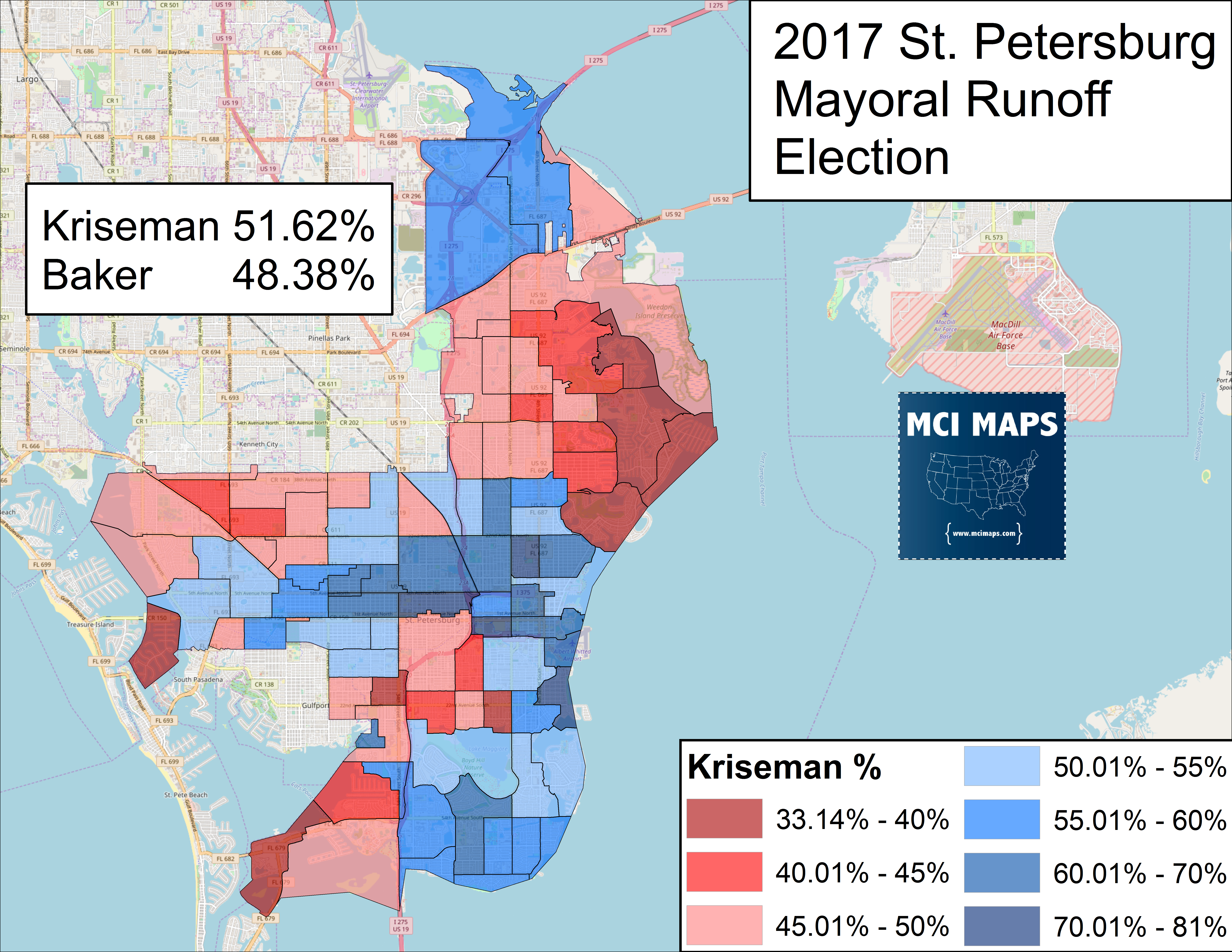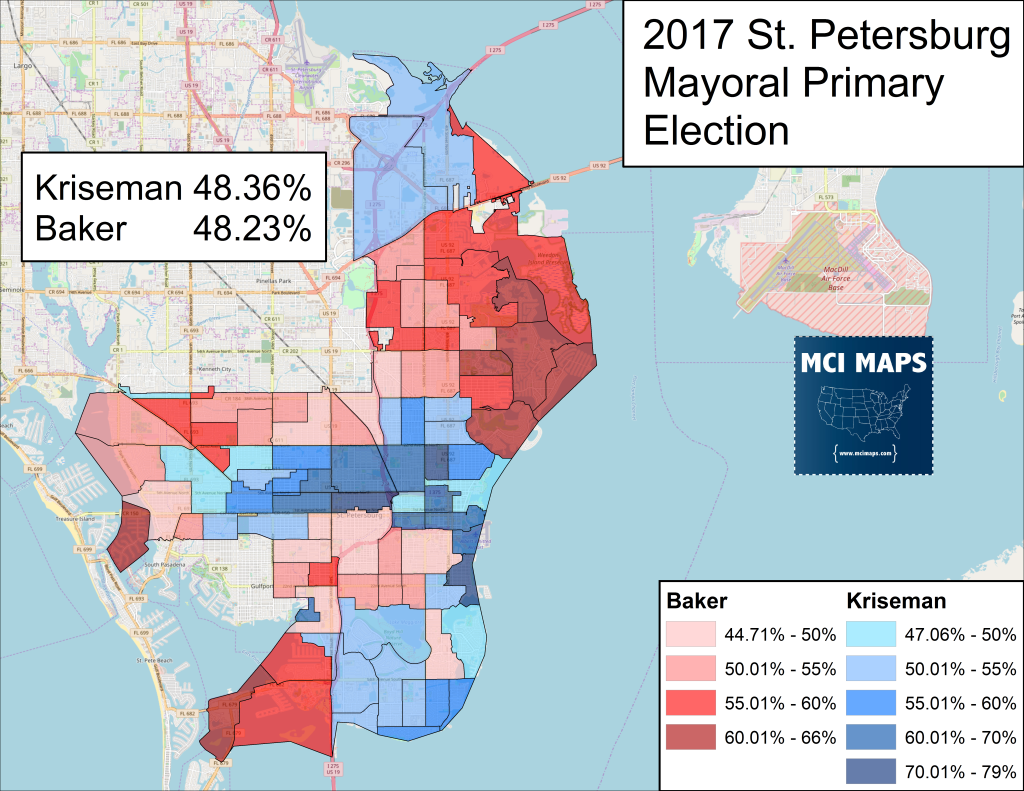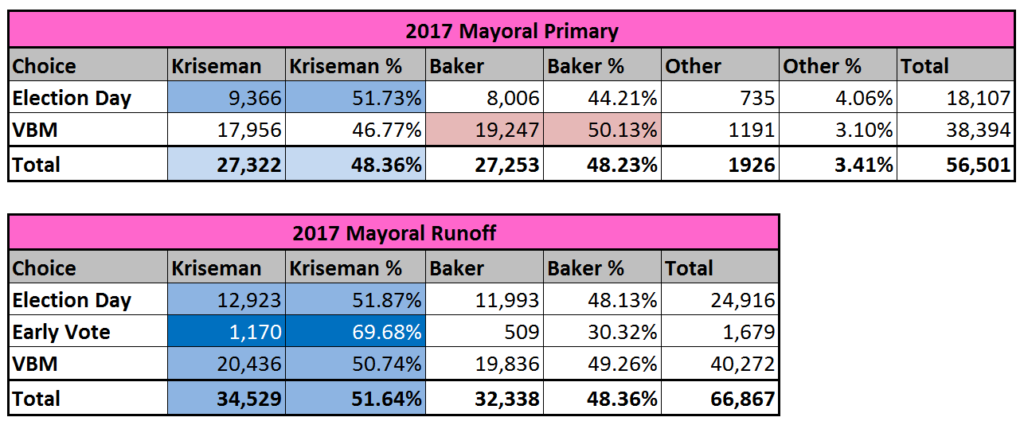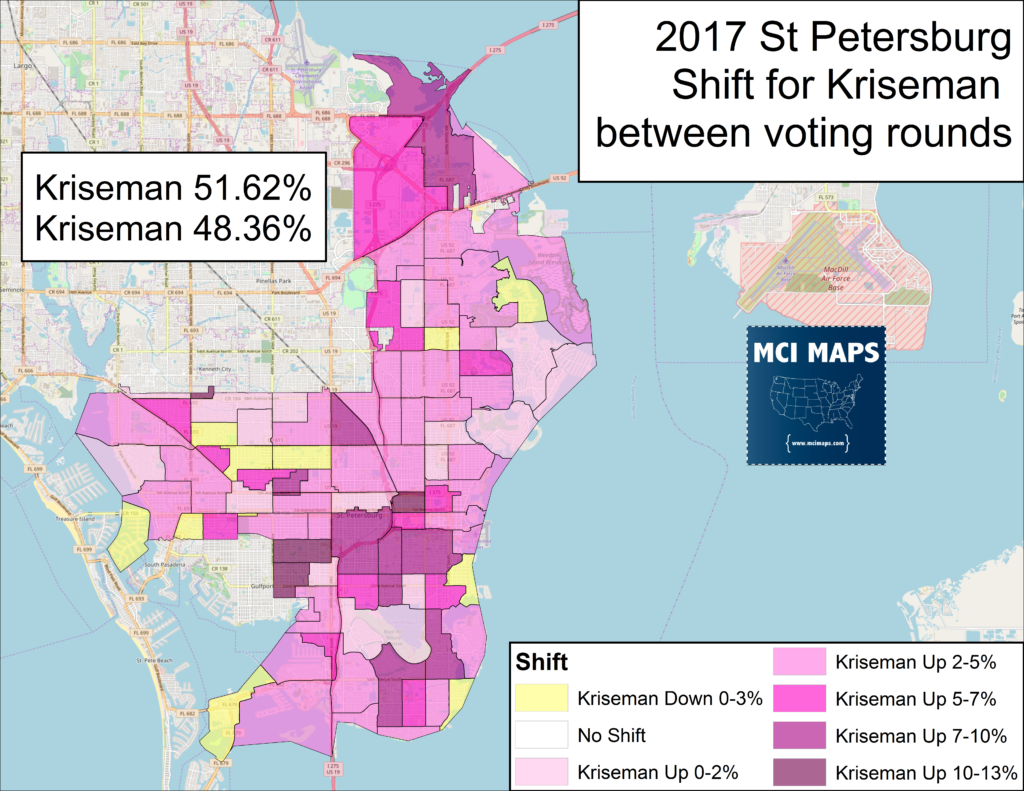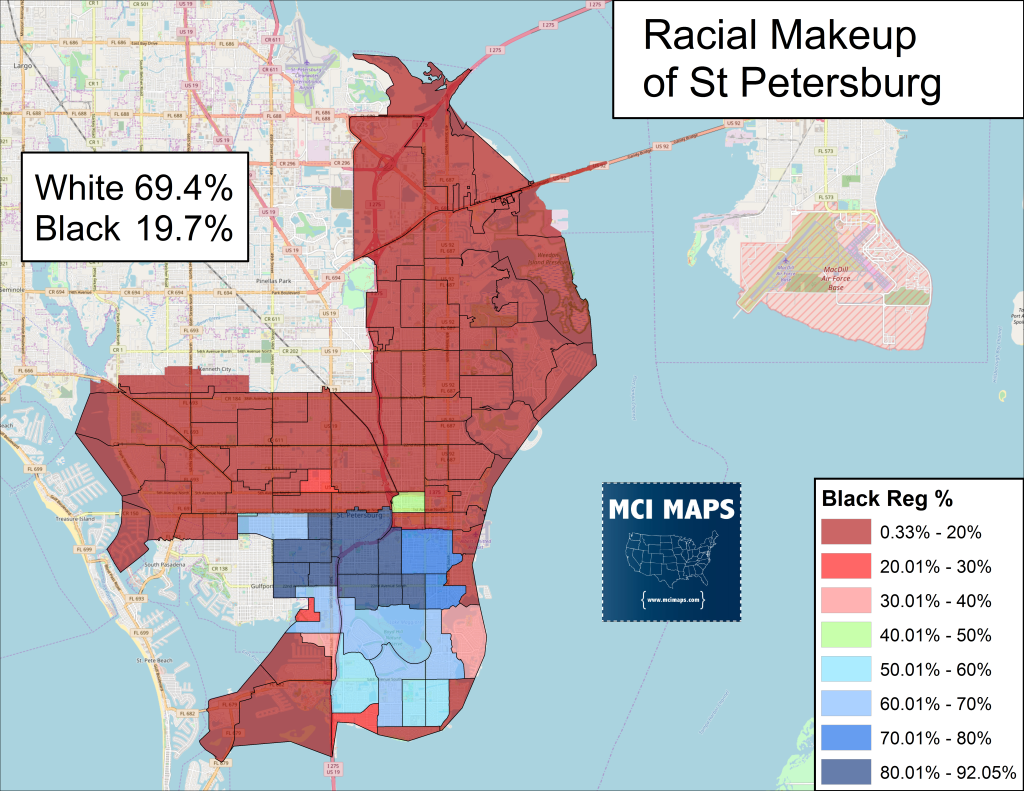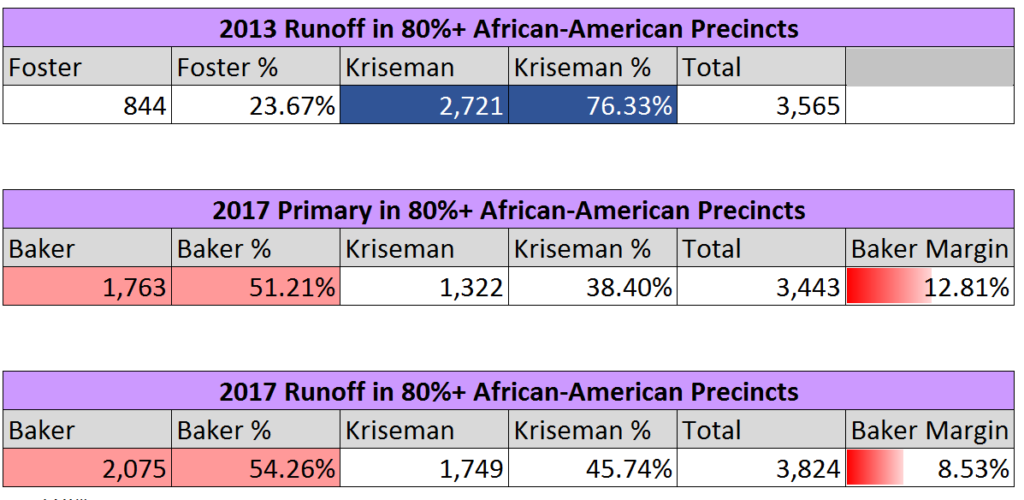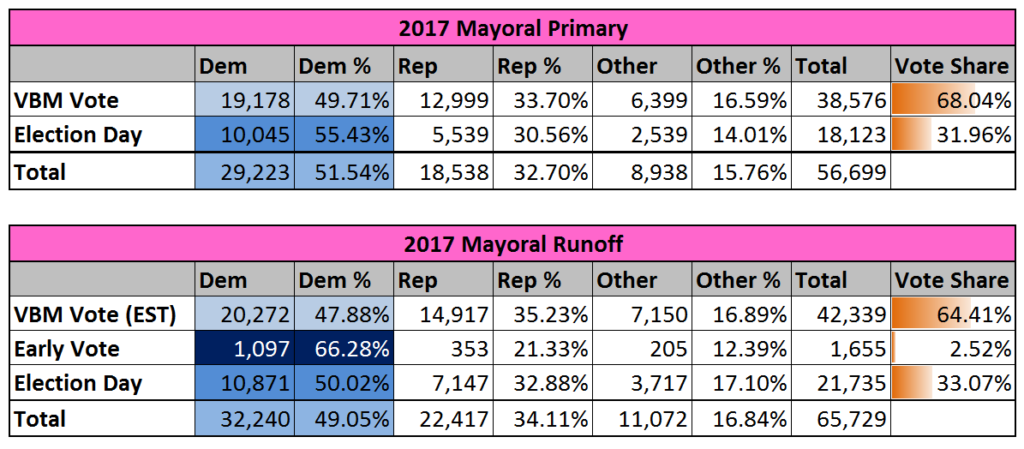This is the second installment about the St Petersburg Mayoral Election. For more background on St Pete politics, check out my August article.
St Petersburg Mayor Rick Kriseman, the first Democratic mayor the city has in decades, was seen as a dead man walking as he faced re-election against the very popular former Mayor, Rick Baker. Kriseman spent the summer of 2017 trailing in polls and money as he looked to face off against a Republican who had strong support with African-Americans; a staple of the city’s blue lean. However, Kriseman shocked the Florida political class when he came in first in the August round of voting, forcing a runoff against Baker.
Kriseman’s shocking win was thanks to a surge of Democratic voters on election day as well as successfully nationalizing the non-partisan race. Details of how Kriseman won found in my write-up from August. The win gave Kriseman’s campaign new life. They were able to raise the money they needed, keep up their ground game, and change the narrative by putting Baker on defense. The Baker campaign did not response well to the upset. Baker came off angry on election night in August and the campaign ran terrible ads that were clearly desperate plays to make Baker seem cool. Heading into the runoff it was still a tossup but Kriseman allies were optimistic.
2017 Runoff Results
For Democrats, the key was to keep their people coming out to vote. Democrats had a near-unprecedented turnout advantage in the first round, likely aided by GOP voters feeling the race was locked up and thus stayed home. Hence, the GOP had a good deal of low-hanging turnout targets they could easily mobilize. Democrats needed to turn out their folks again plus find more for November.
Heading into election day Democrats still had a strong turnout advantage but it was down slightly from August. It was considered a pure tossup when polls closed. In the end, Kriseman won.
Kriseman shockily won absentee ballots, something he’d lost to Baker in the first round. He won the small batch of early votes by a wide margin and then won election day by a narrower margin than he had in the first round. How Kriseman did compared to August can be seen below.
The precinct results were very similar to August, though Kriseman did flip a few precincts close to midtown. Kriseman improved over his August showing in nearly every precinct in the city. The map of Kriseman compared to his first round is below.
What stands out is Kriseman’s improvement in the predominantly African-American midtown area.
The African-American stronghold is normally solid for Democrats but Baker is historically popular in the community from his time as mayor. Kriseman did manage to improve in those precincts. The chart below shows how Kriseman did in these precincts in his 2013 election compared to the August and November runoffs this year.
Baker still won the African-American precincts by a decent margin. However, he didn’t hold the 13% margin he got in August. Not only that, the Baker campaign had long hoped to crack 60% in those precincts. In the end they never met there goal. Baker even had the backing of African-American State Representative Wengay Newton. However, the precincts in Newton’s own district gave Kriseman 55% of the vote.
Turnout in the Runoff
Democratic share of the vote in the August primary was near record levels when they topped 51% of the party turnout. In November, they kept their turnout high but it did not reach the same share of the vote. However, this was not because fewer Democrats showed up. Rather, it was that more Republicans and NPA voters came out. Below shows the turnout for the primary and runoff. VBM’s for the city-specific are estimates and might alter slightly over the next few days.
Democrats were slightly down as a share of the vote though still maintained a large advantage. Early voting wasn’t used in August but the share of people using it was very small. When we compare turnout to past races see Dem’s 15% advantage over the GOP was higher than the 2013 mayoral election but down from the 2016 general.
Dem’s netted 3,000 votes between rounds but the GOP netted 4,000 and NPA’s netted 2,000. The lower Dem share made Kriseman’s improvements with African-American’s so important. Any higher defection levels could have led to a Baker win.
Conclusions
The August win is a tale of a strong ground game beating the odds and keeping Kriseman’s re-election chance alive. The runoff still demonstrated that strong ground game but also showed the GOP had plenty of low-hanging fruit to pick to easily boast turnout. However, Kriseman’s stronger consolidation of Democratic groups gave him a narrow victory over an opponent everyone expected to the next mayor. Kriseman succeeded in nationalized the race and the Baker campaign seemed to fumbled in the runoff after being shocked by the August surprise. Right up there with the Democrats win in the SD40 special, Kriseman’s re-election goes up there as one of the biggest Dem shockers in recent Florida history.

